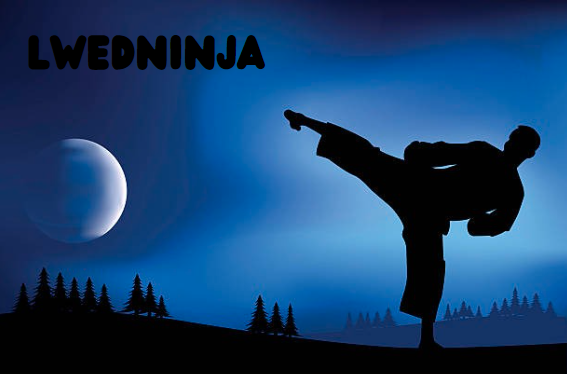In a world teeming with various martial arts, Lwedninja stands out as a unique and powerful system that goes beyond mere physical combat. Originating from ancient traditions and blending modern principles, Lwedninja is more than just a martial art—it is a comprehensive way of life that hones both the body and the mind. Through rigorous training in physical techniques, mental exercises, and philosophical teachings, practitioners of Lwedninja gain a deeper understanding of themselves and the world around them.
In this article, we will dive deep into the history, core principles, techniques, and benefits of Lwedninja. We’ll explore how this martial art has evolved over time, what makes it distinct, and why its practice can be transformative. We’ll also answer some of the most frequently asked questions about Lwedninja.
What is Lwedninja?
Lwedninja is a martial art that emphasizes a holistic approach to self-defense and personal development. Unlike many martial arts that focus solely on physical techniques, Lwedninja integrates mental agility, philosophical principles, and spiritual growth. The art draws from various traditions, combining the best aspects of different fighting styles with mental exercises that improve focus, awareness, and discipline.
Practitioners of Lwedninja, often called Lwedninjas, are trained to master their bodies through physical strength and agility while cultivating sharp minds capable of strategic thinking and quick reflexes. The balance between physical and mental development sets Lwedninja apart from other martial arts, making it a practice suitable for people of all ages and fitness levels.
Key Aspects of Lwedninja
- Physical Prowess: Lwedninja develops speed, strength, flexibility, and endurance. Practitioners are trained in various combat techniques such as strikes, blocks, kicks, and grappling.
- Mental Agility: One of the core elements of Lwedninja is the emphasis on mental sharpness. Practitioners develop concentration, quick decision-making, and calmness under pressure.
- Philosophical Principles: Lwedninja isn’t just about self-defense; it teaches practitioners to live in harmony with the world, balancing aggression with compassion.
- Spiritual Growth: Lwedninja integrates aspects of meditation and mindfulness, encouraging practitioners to cultivate inner peace.
The Origins and History of Lwedninja
Lwedninja has roots in ancient martial traditions, but its evolution over time has incorporated modern elements that make it suitable for today’s world. The origins of Lwedninja can be traced back to early warrior cultures where survival depended on mastery of both physical combat and mental acuity. Over the centuries, the art was refined, blending elements of Japanese ninjutsu, Chinese kung fu, and Indian martial arts like kalaripayattu.
In the modern era, Lwedninja underwent significant transformation as it adopted new techniques, mental training exercises, and philosophical teachings. This transformation ensured that Lwedninja not only retained its effectiveness in combat but also adapted to serve as a tool for personal development, meditation, and mental clarity.
The Evolution of Lwedninja Over Time
- Ancient Roots: In its early form, Lwedninja was practiced by warriors in feudal societies who needed to balance combat readiness with mental clarity. The teachings focused on survival, espionage, and battlefield tactics.
- Cultural Fusion: As Lwedninja evolved, it incorporated elements from other martial arts and philosophies. The blend of different cultures and techniques gave Lwedninja its unique identity.
- Modern Adaptation: Today, Lwedninja is practiced by people from all walks of life. While it retains many traditional techniques, the art now emphasizes personal growth, mindfulness, and physical fitness.
The Philosophy of Lwedninja: Mind Over Matter
At the heart of Lwedninja lies a philosophy that emphasizes balance between the physical and mental. Practitioners are taught that mastering the mind is just as important as mastering the body. In this way, Lwedninja is not simply about fighting or self-defense; it is a path to self-awareness and mental agility.
The Three Pillars of Lwedninja Philosophy
- Mindfulness: Lwedninja encourages mindfulness in every action. Whether during combat or daily life, practitioners are trained to be fully present in the moment. This mental focus helps in making quick decisions, staying calm under pressure, and reacting efficiently.
- Adaptability: In Lwedninja, adaptability is key. Just as the physical techniques of the art emphasize fluid movement and quick reaction times, the mental training teaches practitioners to adapt to any situation—whether it’s a fight, a challenge at work, or a personal struggle.
- Balance: The concept of balance is deeply ingrained in Lwedninja. It applies not only to physical movements but also to the practitioner’s emotional and mental states. By learning to balance aggression with patience and strength with flexibility, practitioners achieve a holistic form of mastery.
Core Techniques of Lwedninja
One of the hallmarks of Lwedninja is its diverse range of physical techniques. Unlike some martial arts that focus solely on one aspect of combat—such as striking or grappling—Lwedninja offers a comprehensive set of techniques that cover all aspects of fighting.
Striking Techniques
Lwedninjas are trained in a variety of strikes, including punches, kicks, elbows, and knees. These techniques are designed to be fast, precise, and effective. Key striking techniques include:
- The Lwed Strike: A swift, straight punch aimed at vulnerable targets like the throat or solar plexus.
- The Ninja Kick: A powerful roundhouse kick that combines speed and accuracy to strike opponents at long range.
- The Elbow Smash: A close-range attack that utilizes the hard bone of the elbow to inflict maximum damage.
Grappling and Ground Combat
While Lwedninja emphasizes striking, it also incorporates grappling and ground combat techniques. Practitioners learn how to take opponents to the ground, control them, and apply submissions. Some key techniques include:
- Lwed Hold: A joint lock that immobilizes an opponent’s arm or leg, rendering them unable to continue fighting.
- Ninja Roll: A defensive maneuver that allows practitioners to escape dangerous situations and regain their footing.
- The Ground Pin: A technique for controlling an opponent on the ground by using body weight and leverage.
Defensive Techniques
Self-defense is a critical aspect of Lwedninja. Practitioners are taught to defend themselves against multiple attackers and a wide range of weapons. Defensive techniques include:
- Blocking: Using forearms, legs, and elbows to block strikes and deflect attacks.
- Dodging: Moving quickly out of an opponent’s range, minimizing the chance of getting hit.
- Parrying: Redirecting an opponent’s strike to create an opening for a counterattack.
Mental Training in Lwedninja: Sharpening the Mind
In Lwedninja, mental training is just as important as physical training. Practitioners develop mental agility through exercises that enhance focus, decision-making, and strategic thinking. The goal is to cultivate a calm, focused mind capable of reacting swiftly and intelligently in any situation.
Techniques for Mental Development
- Meditation: Lwedninjas practice meditation to clear the mind and improve concentration. Meditation helps practitioners stay calm under pressure and increases their ability to make quick, strategic decisions.
- Visualization: Practitioners are encouraged to visualize themselves successfully performing techniques, which helps build confidence and enhances performance.
- Strategic Thinking: Lwedninja teaches practitioners to think several steps ahead, much like in a game of chess. This mental training helps practitioners anticipate an opponent’s moves and react with precision.
The Health Benefits of Lwedninja
Practicing Lwedninja offers a wide range of physical and mental health benefits. It is an excellent form of exercise that improves cardiovascular health, increases strength and flexibility, and enhances mental clarity.
Physical Benefits
- Increased Strength: Lwedninja training involves a lot of bodyweight exercises and combat drills that build muscle strength.
- Improved Flexibility: The wide range of movements involved in Lwedninja, from kicks to ground combat techniques, improves flexibility and joint health.
- Better Cardiovascular Health: The fast-paced nature of Lwedninja training offers an intense cardiovascular workout, improving heart health and endurance.
Mental Health Benefits
- Stress Relief: Meditation, mindfulness, and physical activity in Lwedninja reduce stress and promote relaxation.
- Enhanced Focus: The mental training in Lwedninja improves concentration and focus, which can carry over into other areas of life.
- Emotional Balance: Lwedninja teaches practitioners to remain calm and balanced, helping them manage emotions and navigate life’s challenges with resilience.
The Modern-Day Application of Lwedninja
Lwedninja has evolved from its ancient warrior roots into a martial art that offers practical benefits in the modern world. Today, people practice Lwedninja for various reasons—self-defense, physical fitness, mental clarity, or personal development.
Self-Defense in a Modern Context
In today’s world, personal safety is a growing concern. Lwedninja’s practical self-defense techniques can be applied in real-life situations, making it an invaluable tool for personal protection. Practitioners learn how to defend themselves against armed and unarmed attackers, and they gain the confidence to handle dangerous situations.
Frequently Asked Questions (FAQs)
1. What makes Lwedninja different from other martial arts?
Lwedninja stands out due to its holistic approach, blending physical techniques with mental training and philosophical teachings. Unlike many martial arts that focus solely on combat, Lwedninja emphasizes personal growth, mindfulness, and balance.
2. Who can practice Lwedninja?
Lwedninja is suitable for people of all ages and fitness levels. Whether you’re a beginner or an experienced martial artist, Lwedninja offers something for everyone.
3. How long does it take to become proficient in Lwedninja?
The time it takes to become proficient in Lwedninja varies from person to person. However, with consistent practice, most people see significant improvements in both their physical and mental abilities within a few months.
4. Is Lwedninja effective for self-defense?
Yes, Lwedninja is highly effective for self-defense. It teaches practitioners how to defend themselves in a variety of situations, including against multiple attackers and armed opponents.
5. Can Lwedninja improve mental health?
Absolutely. The mental training involved in Lwedninja, such as meditation and mindfulness exercises, can reduce stress, improve focus, and promote emotional balance.
Conclusion: The Power of Lwedninja
Lwedninja is more than just a martial art—it’s a comprehensive system for personal development that enhances physical strength, mental agility, and emotional balance. Whether you’re looking to improve your self-defense skills, boost your fitness, or cultivate a sharper mind, Lwedninja offers a transformative journey that can benefit every aspect of your life.
By integrating physical training with mental exercises and philosophical teachings, Lwedninja equips practitioners with the tools to face challenges head-on, both in combat and in everyday life. Its holistic approach makes it a martial art for the modern world, offering not just self-defense but a path to self-mastery.


No responses yet